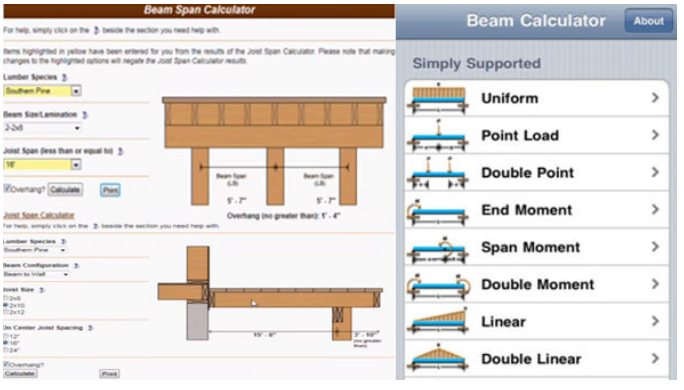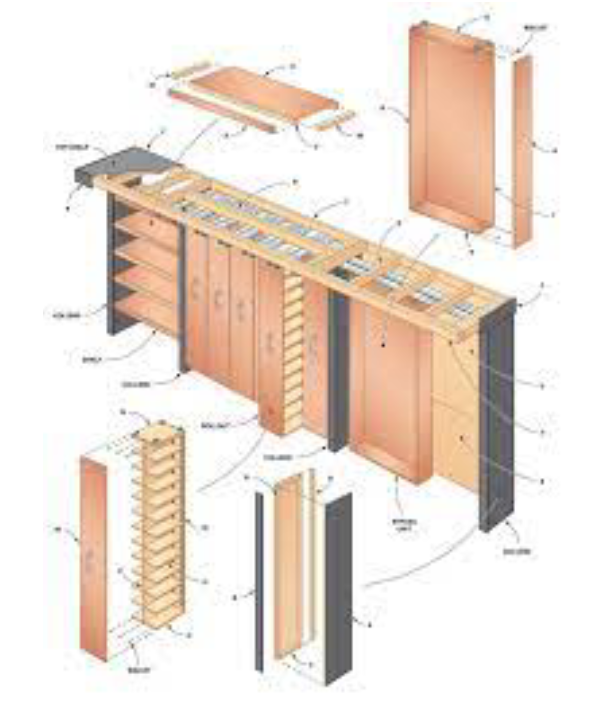Span Calculator
The modern construction industry continuously evolves, with new technologies and software solutions shaping how we design and build structures. One such groundbreaking innovation is the Span Calculator, a powerful structural engineering tool. This cutting-edge software offers unparalleled ease in creating and analyzing networks by automating calculating the maximum span for various materials and load-bearing capacities. In this article, we will delve into the intricate details of the Span Calculator and explore how it benefits engineers, architects, and contractors alike.
What is a Span Calculator?
A Span Calculator is a sophisticated software program that calculates the maximum span for beams, joists, and other structural elements based on input parameters such as material properties, loading conditions, and support conditions. It simplifies the complex process of determining the optimal span for a given project, reducing the time and effort spent on manual calculations and ensuring accurate, consistent results.

Key Features of a Span Calculator
1. Material Selection: Span Calculators offer extensive materials databases, including steel, concrete, wood, and composite materials, allowing users to choose the most suitable material for their project requirements.
2. Load Input: The software allows users to input various types of loads, such as dead loads (permanent loads), live loads (temporary or movable loads), and environmental loads (wind, snow, and seismic).
3. Support Conditions: Span Calculators accommodate different support conditions, including simple, fixed, and continuous supports, ensuring a comprehensive analysis for any structure.
4. Design Codes and Standards: The software incorporates relevant design codes and standards from around the world, guaranteeing compliance with local and international regulations.
5. Graphical Interface: Span Calculators feature intuitive graphical interfaces, enabling users to visualize their design and make informed decisions based on real-time results.
6. Optimization Tools: Some Span Calculators have built-in optimization tools that help users find the most efficient and cost-effective design solutions.
Read More: Tile Calculator

Benefits of Using a Span Calculator
1. Increased Efficiency: Span Calculators streamline the design process, reducing the time spent on manual calculations and allowing engineers to focus on other critical aspects of their projects.
2. Improved Accuracy: The software eliminates human error, ensuring consistent and precise calculations that adhere to the latest design codes and standards.
3. Enhanced Collaboration: Span Calculators enable seamless collaboration between engineers, architects, and contractors, facilitating a unified approach to design and construction.
4. Sustainability: By optimizing material selection and design solutions, Span Calculators promote using sustainable materials and help reduce the environmental impact of construction projects.
5. Cost Savings: The software assists in identifying cost-effective solutions, leading to significant savings in material and labor expenses
How to Choose the Right Span Calculator for Your Needs
1. Compatibility: Ensure that the Span Calculator you select is compatible with your existing design software and hardware to facilitate seamless integration and prevent potential workflow disruptions.
2. User-Friendly Interface: Look for a Span Calculator with an intuitive interface that simplifies the design process and makes it easy for users of varying skill levels to navigate.
3. Customization Options: Choose a software that allows you to customize material databases, loading conditions, and other design parameters to suit the unique requirements of your projects.
4. Technical Support: Opt for a Span Calculator with responsive and reliable technical support, as this can prove invaluable in resolving any issues or providing guidance when needed.
5. Pricing: Compare the pricing of various Span Calculators, considering their features, and choose one that provides the best value for your investment.
Learn More: Fence Material Calculator
How to Use a Span Calculator?
Using a Span Calculator is relatively straightforward, and most software comes with user manuals and online tutorials to guide users through the process. Here are the general steps to follow:
1. Select the material: Choose the appropriate material for your project, such as wood, steel, or concrete.
2. Input loading conditions: Enter the loads that the structure will be subjected to, including dead loads, live loads, and environmental loads such as wind and snow.
3. Enter support conditions: Specify the support conditions for the structure, such as simple, fixed, or continuous supports.
4. Choose design codes and standards: Select your location’s relevant design codes and standards to ensure compliance with local regulations.
5. Generate results: Click on the “calculate” or “analyze” button to generate results, showing the maximum span the chosen material can support under the given loading and support conditions.
6. Evaluate results: Review them and assess whether they meet your project’s requirements. If not, adjust the input parameters and rerun the calculations until satisfactory results are obtained.
7. Optimize design: If the software has built-in optimization tools, use them to identify the most efficient and cost-effective design solutions.
Conclusion
In conclusion, the Span Calculator is a powerful tool that has revolutionized structural engineering, providing a fast, accurate, and efficient way to calculate the maximum span for various materials and load-bearing capacities. Using a Span Calculator, designers, engineers, and contractors can ensure their structures’ safety and integrity while reducing costs, enhancing sustainability, and improving collaboration. With the right software and proper training, anyone can utilize this innovative technology to achieve optimal design solutions for their construction projects.
FAQs
What types of materials can a Span Calculator work with?
Span Calculators work with various materials, including steel, concrete, wood, and composite. Users can choose the most suitable material for their specific project requirements.
How does a Span Calculator account for different load types?
A: The software allows users to input various types of loads, such as dead loads (permanent loads), live loads (temporary or movable loads), and environmental loads (wind, snow, and seismic).
Are Span Calculators compliant with international design codes and standards?
Span Calculators incorporate relevant design codes and standards worldwide, ensuring compliance with local and international regulations.
What are the main benefits of using a Span Calculator?
The main benefits of using a Span Calculator include increased efficiency, improved accuracy, enhanced collaboration, sustainability, and cost savings.
How can I choose the right Span Calculator for my needs?
When choosing a Span Calculator, consider factors such as compatibility, user-friendly interface, customization options, technical support, and pricing.
What are some real-world applications of Span Calculators?
Real-world applications include residential buildings, commercial construction, bridge design, industrial facilities, and renovation projects.

